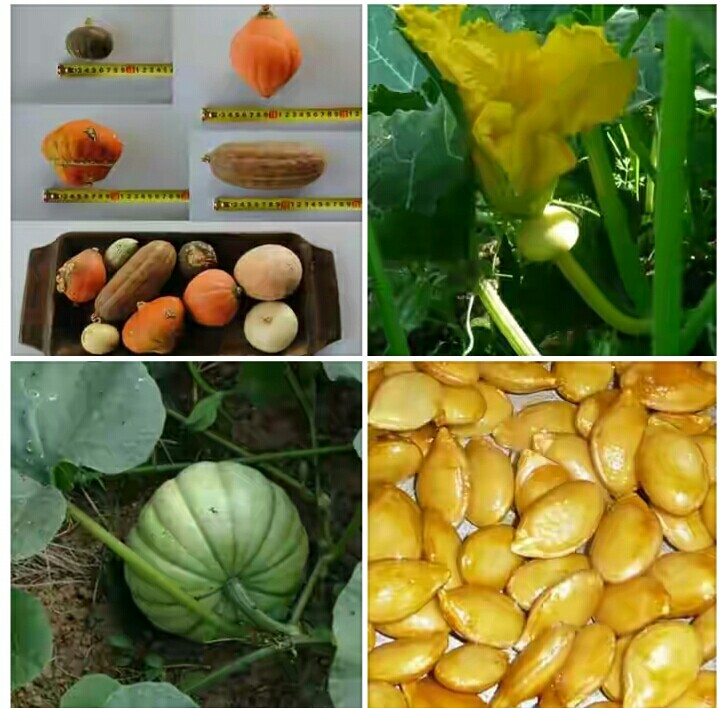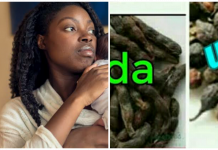Cucurbita maxima (Botanical name) or Pumpkin, Winter squash (English) or Kabewa, Kabaiwa, Kabushi, Kabus, Ruguguwa, Wawan gona, Gamon fatake (Hausa) or Ugbogulu (Igbo) or Dynia (Polish): All you need to know about the multipurpose plant
Pumpkin (Cucurbita maxima) is gourd squash and belongs to Cucurbitaceae family.
The Cucurbitaceae family comprises of about 80 genera and over 800 species. Pumpkin plant is a perennial plant (can survive for the period of more than 2 years) with leafy green vegetable and has a climbing stem of up to 12m long. Typically, pumpkin has a thick, orange or yellow shell, creased from the stem to bottom and contains seeds and pulp. Pumpkin plants are hardy creepers or soil surface runners, but also climb wherever the supports are present. There are generally three species of pumpkin available in the market which includes Cucurbita pepo, Cucurbita moschata and Cucurbita maxima and all of these three species are cultivated worldwide.
Pumpkin seeds are versatile (multipurpose) in nature in their uses and most parts of pumpkin seeds are edible, including the fleshy shell, seeds, leaves and even the flowers. Ripe pumpkin fruit can be boiled, baked, steamed or roasted. In the USA, besides being used as jack-o’-lanterns at Halloween, pumpkins are used to make pumpkin butter, pies, custard, bread, cookies and soup. It is high in β-carotene, which gives it yellow or orange color. Beta-carotene in plants that have a pleasant yellow-orange color is a major source of vitamin A.
It is also high in carbohydrates and minerals. Consumption of carotene containing foods helps in the prevention of dermatological ailments, eye disorders and certain cancers. Incorporation of β -carotene rich ingredients in the form of pumpkin powder or flour in food products is therefore considered a very effective approach to eradicate vitamin-A related health problems. Vitamin A is essential for healthy skin, vision, bone development and many other functions.
Pumpkin is also a tasty source of carbohydrates and potassium. 1 cup cooked of mashed pumpkin provides: 24 kcal, 1 gram of protein, 5.98 grams of carbohydrates, 1 gram dietary fibre, 280.6 mg potassium, 36.6 mg phosphorus, 1320 IU vitamin A (if beta-carotene is converted in the body), 5.73 mg vitamin C. Pumpkin Seed Oil can be used as antioxidant, lipid balancing oil that infuses the skin with phytochemicals that prevent disease while lipids normalize the lipid barrier to protect from infection.
Cucurbita Pepo pumpkin fermented juice can be used in cosmetic, and works anti-aging, infuses the skin with phytochemicals and fortifying compounds that strengthens cellular responses, accelerates exfoliation processes. When pumpkin juice is fermented, it makes the nutrients more bio-available, and creates more enzymes.
This fermentation process creates incredible nutrients for the skin. Cucurbita Pepo bioferment may Promote even exfoliation by maintaining even hydration and bacteria that convert elements into lactic acid to re-hydrate the skin. Pumpkin is used to produce wine in some countries.
Pumpkin wine displays property of anti-aging, infuses the skin with phytochemicals and fortifying compounds that strengthens cellular responses, accelerates exfoliation processes. When pumpkin juice is fermented, it makes the nutrients more bio-available, and creates more enzymes. This fermentation process creates incredible nutrients for the skin.
Pumpkin seeds are very important for people dwelling in tropical countries as they have purported effects against tapeworms. Given their safety, they are often recommended as an addition to other, more reliable therapies. In Germany, 200-400 grams (about 6-13 ounces) are ground and taken with milk and honey, followed by castor oil two hours later.
Tapeworms can cause severe illness and should be treated only with medical supervision. Human studies conducted in China have shown pumpkin seeds to be helpful for people with acute schistosomiasis, a severe parasitic disease transmitted from snails that occurs primarily in Asia and Africa. The assistance of a physician is required to help diagnose and treat any suspected intestinal parasite infections.
Pumpkin seeds are mildly diuretic and have been used in Central American medicine as a treatment for nephritis and other urinary system problems. Certain varieties of pumpkin that are particularly diuretic, tonic to an irritable bladder, and high in zinc have been recommended in the early stages of prostate problems. However, they do not reduce prostate enlargement. Cucurbita maxima seeds contain the amino acid L-tryptophan that can be transformed to serotonin (a happiness hormone), and for this reason have been suggested to help remedy depression.
However, research is needed before pumpkin seeds can be considered for this purpose. It is unlikely that the amount of L-tryptophan in pumpkin seeds would be sufficient to relieve depression. Pumpkin seeds can be useful in promoting prostate health. The increasing incidence of prostate enlargement in across our globe, particularly in the U.S. men has catapulted pumpkin seeds into the health spotlight.
These seeds contain chemical substances called cucurbitacins that can prevent the body from converting testosterone into a much more potent form of this hormone called dihydrotestosterone. Without dihydrotestosterone, it is more difficult for the body to produce more prostate cells, and therefore more difficult for the prostate to keep enlarging.
The fact that pumpkin seeds serve as a good source of zinc makes them doubly well-suited for this role as a prostate protector, since zinc is a mineral also used by healthcare practitioners to help reduce prostate size. In Germany, pumpkin seeds are official in the German Pharmacopeia, tenth edition, approved in the Commission E monographs, and also official in the German Standard License monographs.
They are used as a component of a few urological and prostate drug preparations. In German pediatric medicine, pumpkin seed preparations (e.g., Granufink K rbis-Granulat) are used to treat irritable bladder and also enuresis nocturna (bedwetting). Granufink is a granulated and sugar-coated pumpkin seed from a medicinal cultivar of pumpkin (e.g., Cucurbita pepo L. convar. citrullinina Greb. var. styriaca Greb.). The healing properties of pumpkin seeds have also been recently investigated with respect to arthritis.
In animal studies, the addition of Cucurbita maxima seeds to the diet has compared favorably with use of the non-steroidal anti-inflammatory drug indomethacin in reducing inflammatory symptoms. Importantly, though, pumpkin seeds did not have one extremely unwanted effect of indomethacin; unlike the drug, pumpkin seeds do not increase the level of damaged fats (lipid peroxides) in the linings of the joints, a side-effect that actually contributes to the progression of arthritis.
Pumpkin contains biologically active compounds like polysaccharides, para-aminobenzoic acid, fixed oils, sterol, proteins and peptides. The fruits are a good source of carotenoid and γ-aminobutyric acid (GABA).
Due to its popular medicinal uses, researchers have focused on it from the last few decades, using modern tools, and credited pumpkin with antidiabetic, antihypertensive, antitumor, immunomodulative, antibacterial, anti-hypercholesterolemia, intestinal anti-parasitic, anti-inflammatory and antalgic.
It is worth underlying that GABA is a major neurotransmitter widely distributed throughout the central nervous system (CNS). Because too much excitation can lead to irritability, restlessness, insomnia, seizures, and movement disorders, it must be balanced with inhibition. GABA – the most important inhibitory neurotransmitter in the brain – provides this inhibition, acting like a “brake” during times of runaway stress. Both synthetic and natural GABA are available as dietary supplements in the United States.
Natural GABA is produced via a fermentation process that utilizes Lactobacillus hilgardii – the bacteria used to ferment vegetables in the preparation of the traditional Korean dish known as kimchi. LOW GABA LEVELS ARE ASSOCIATED WITH SEVERAL PSYCHIATRIC AND NEUROLOGICAL DISORDERS, INCLUDING ANXIETY, DEPRESSION, INSOMNIA, AND EPILEPSY. Other foods high in GABA include: Adzuki bean, barley, broccoli, buckwheat, chestnut, common bean, kale, lupin, maypop, mouse-ear hawkweed, oat, pea, pokeroot, potato, rice, shiitake, soya bean, spinach, St John’s wort, sweet potato, tea, tomato, valerian, wheat, wild celery.

FOR FURTHER READING SEE:
Fu, C, Shi H, Li Q. A review on pharmacological activities and utilization technologies of pumpkin. Plant Foods Hum. Nutr 2006; 61(2):73-80.
Guallar E., Stranges S., Mulrow C., Appel L.J., Miller E.R., 3rd. Enough is enough: Stop wasting money on vitamin and mineral supplements. Ann. Intern. Med. 2013;159:850–851
Tsai YS, Tong YC, Cheng JT, Lee CH, Yang FS, Lee HY. Pumpkin seed oil and phytosterol-F can block testosterone/prazosin-induced prostate growth in rats.Urol. Int. 2002; 77(3):269-274.
Gossell-Williams M, Davis A, O’Connor N. Inhibition of testosterone-induced hyperplasia of the prostate of Sprague- Dawley rats by pumpkin seed oil. J. Med. Food, 2006; 9(2):284-286.
These are the thoughts and intellectual property of:
Sa’eed Halilu Bawa
Senior Lecturer (Associate Professor) at University of the West Indies, St. Augustine Campus, Trinidad.
Studied Food and Nutrition Sciences, Dietetics at Kaduna Polytechnic, Nigeria; Warsaw University of Life Sciences, Poland.

























Brilliant!
I wonder where I can get the seeds in Nigeria. Each time I ask, people come up with the fluted variety (Ugwu).
I also wonder if the seeds of the fluted variant can be used for the same medicinal purposes (GUT Health Dietary Supplement)
Wonder why people mispronounce/misspell Ugu. it is Ugu. Ugwu is hill/mountain, or respect depending on context. You can easily find this in the east. I want to get one for myself to plant next season. I manage the one they have here in the US which they call acorn squash. They taste is similar but I want to plant our exact Ugboguru for its fruits and vegetables.